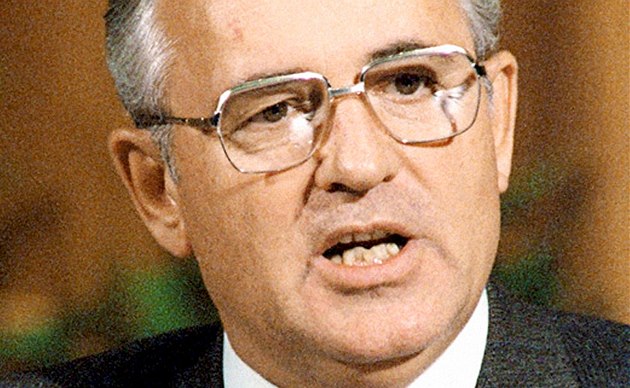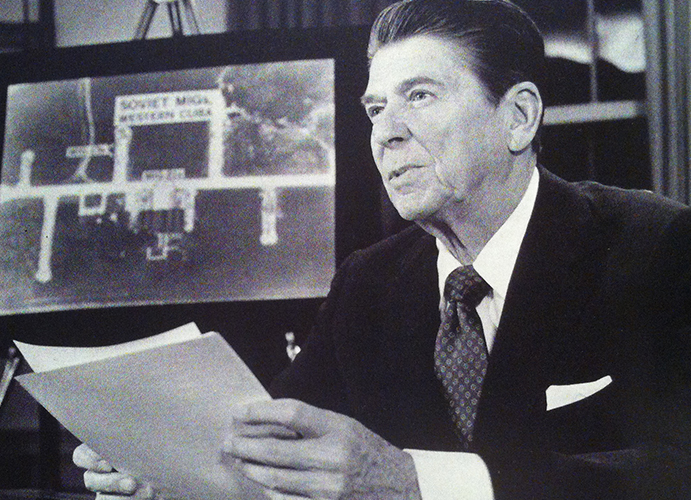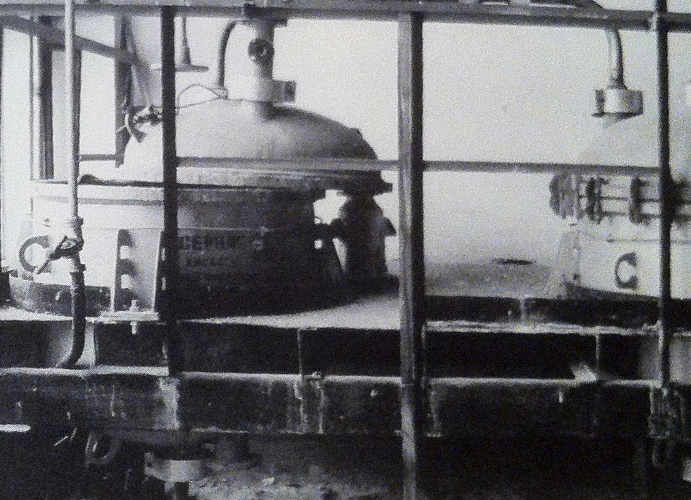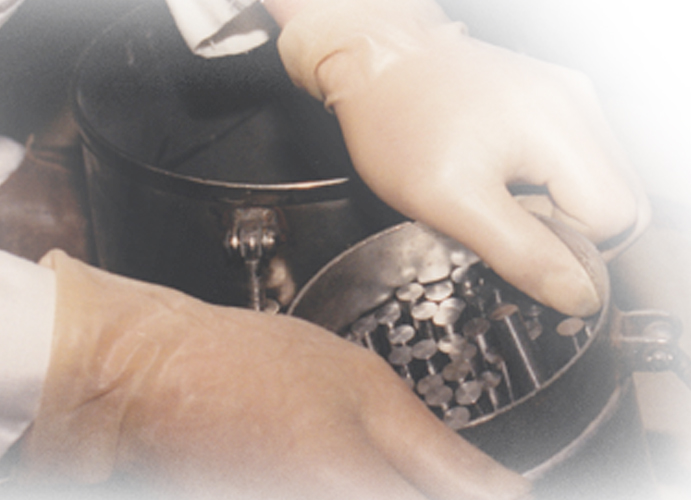Gorbachev and the End of the Arms Race
The book offers striking new evidence of the central role of Soviet leader Gorbachev in standing up to his own generals and slowing the nuclear competition between the superpowers. Gorbachev’s achievements—braking what he called the speeding locomotive of the arms race, allowing a revolution in Europe to unfold peacefully, ending the confrontation in the Third World—were not his first objectives. They grew out of his desire to save his country from ruin. In the end, he did not save the country but may have saved the world.

Michal Gorbachev / RAI-Novasti
Reagan, Gorbachev and “Star Wars”

Ronald Reagan / Ray Lustig & Washington Post
Drawing on internal documents never before revealed, The Dead Hand details how Soviet leaders responded to Ronald Reagan’s dream of a globe-straddling defensive shield that would make nuclear weapons obsolete. Only months after Gorbachev took office, the Soviet missile and space designers laid on his desk a colossal plan to build their own Soviet “Star Wars.” It would have cost billions of rubles and extended the arms race into outer space. But Gorbachev would not do it.
An argument was often made in later years that it was Reagan’s Strategic Defense Initiative that bankrupted the Soviet Union. Reagan’s vision certainly gave Soviet leaders a fright—it symbolized the unbridled nature of American ambitions and technological superiority. But in the end, Reagan did not build it. The Soviet Union did not build one either. Gorbachev was determined to avoid an arms race in space, and Soviet technology could not possibly have met the challenge. The early plans for a Soviet “Star Wars” never reached fruition. The Dead Hand tells this dramatic story.
Biological Weapons
The Dead Hand reveals the scope and depth of the Soviet germ warfare effort, the dark underside of the arms race. Using genetic engineering, Soviet scientists tried to create unstoppable pathogens the world had never before seen. They built a factory to produce tons of anthrax in the event of war. They violated their commitments under the Biological and Toxin Weapons Convention. The book provides new documentary evidence of how this illicit program was covered up. Boris Yeltsin tried to shut it down—but was subverted by his own generals.

THE DEAD HAND
From Brezhnev’s day onwards, Soviet leaders feared “decapitation” – that they could be killed in a matter of minutes by American missiles. So they invented an automatic retaliatory system, known as the Dead Hand, that would launch all their nuclear missiles if they were wiped out. After it was drawn up, they had second thoughts about the fully automatic system, so they instead built a semi-automatic system that would leave the fate of Earth in the hands of three surviving duty officers buried deep underground in a concrete, globe-shaped bunker. It was a Doomsday Machine; it was really built and it still exists, and the story is told in the book.
After the Collapse

The end of the Soviet Union in 1991 marked the end of seven decades of a failed ideology, hyper-militarization and rigid central controls. It left behind 6,623 nuclear warheads on land-based intercontinental ballistic missiles, 2,760 nuclear warheads on sea-based missiles, 822 nuclear bombs on planes and 150 warheads deployed on cruise missiles, as well as perhaps another 15,000 tactical nuclear warheads scattered in depots, trains and warehouses. It left behind tons of chemical weapons, anthrax bacteria spores, and smallpox. It left behind hundreds of thousands of workers who knew the secrets, and who were now embittered, dispirited, and, in some cases, down to their last sack of potatoes. The Dead Hand tells the jaw-dropping story of the race against time to make sure the weapons and the scientists did not fall into the wrong hands.